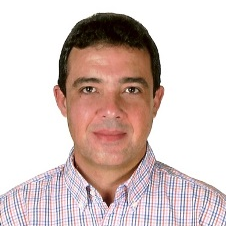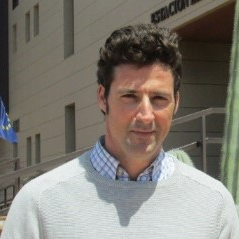Coastal Aquifers Management: Hydrological, Environmental, Economic and Social Challenges in the Context of Global Change
A special issue of Water (ISSN 2073-4441). This special issue belongs to the section "Water Resources Management, Policy and Governance".
Deadline for manuscript submissions: closed (30 June 2023) | Viewed by 22776
Special Issue Editors
Interests: water resource management; techniques and computational applications for modelling of groundwater dynamics at different spatiotemporal scales and climate conditions; applied geophysics
Special Issues, Collections and Topics in MDPI journals
Interests: water management; climate change; hydrological modelling; machine learning
Special Issues, Collections and Topics in MDPI journals
Interests: applications of electrical, seismic, and electromagnetic techniques focused on near-surface characterization in environmental, mining, and hydrogeological research
Special Issues, Collections and Topics in MDPI journals
Interests: drylands; desertification; global change; groundwater-dependent agriculture; rangelands; system dynamics; hyper-arid lands; land-use change dynamics
Special Issues, Collections and Topics in MDPI journals
Special Issue Information
Dear Colleagues,
Groundwater is limited and its sustainable use is peremptory to preserve dependent ecosystems and human supplies. This resource is especially crucial in densely populated coastal areas with limited surface water sources. The excessive groundwater use to supply the increasing urban, tourism, industrial, and agriculture demands is adding stress to many coastal aquifers, and the number of cases with alarming signs of groundwater quantity and quality degradation are increasing.
In the current context of global climate change, complex interactions between global driving forces (rising sea levels, increasing storm frequency, evapotranspiration rates, and atmospheric salinity inputs) and human activities (inducing saltwater intrusion, mobilization of brines, chemical pollution, and loss of environmental values) threaten coastal aquifers. The consequence is groundwater salinity exceeding the standards of quality required for human health, crop production, industrial activity, and ecosystem survival. Saving measures and the production of non-conventional water sources to supplement the growing demand may be partial solutions, but the energy price growth is slowing many initiatives down. Thus, understanding these complex interactions is a challenge because the equilibrium between sustainable use, economic profit dictated by global markets, environmental protection, and social habits is subject to the fragile threshold imposed by the groundwater salinity.
This Special Issue is looking for original research exploring global driving forces and human activities determining the sustainability of coastal aquifers, including but not limited to:
- Hydrological studies aimed at conceptualizing aquifer functioning and assessing the groundwater resource quantity and quality (e.g., geological, geophysical, hydraulic, chemical, and modelling surveys);
- Environmental analyses aimed at assessing the factors threatening habitats (e.g., overexploitation, salinity increase, human occupation, pollution, land degradation);
- Economic appraisals aimed at linking groundwater use and profit (e.g., water–energy–food nexus, water treatment investment, control of international markets, opportunity costs);
- Social habits for water consumption and future adaptations (e.g., water restriction, water migrants, education, participation).
Innovative papers describing case studies of one or more of the above scientific fields, applying exploration and modelling techniques, describing a specific computational tool and/or comparing several of the existing ones, and introducing new algorithms and software platforms are welcome. Disruptive proposals presented from a holistic perspective that really take a step forward in the above scientific fields, as well as reviews describing the state-of-the-art in these fields and scopes are also welcome.
We look forward to receiving your contributions.
Dr. Francisco Javier Alcalá
Prof. Dr. Javier Senent Aparicio
Prof. Dr. Pedro Martínez-Pagán
Dr. Jaime Martínez-Valderrama
Guest Editors
Manuscript Submission Information
Manuscripts should be submitted online at www.mdpi.com by registering and logging in to this website. Once you are registered, click here to go to the submission form. Manuscripts can be submitted until the deadline. All submissions that pass pre-check are peer-reviewed. Accepted papers will be published continuously in the journal (as soon as accepted) and will be listed together on the special issue website. Research articles, review articles as well as short communications are invited. For planned papers, a title and short abstract (about 250 words) can be sent to the Editorial Office for assessment.
Submitted manuscripts should not have been published previously, nor be under consideration for publication elsewhere (except conference proceedings papers). All manuscripts are thoroughly refereed through a single-blind peer-review process. A guide for authors and other relevant information for submission of manuscripts is available on the Instructions for Authors page. Water is an international peer-reviewed open access semimonthly journal published by MDPI.
Please visit the Instructions for Authors page before submitting a manuscript. The Article Processing Charge (APC) for publication in this open access journal is 2600 CHF (Swiss Francs). Submitted papers should be well formatted and use good English. Authors may use MDPI's English editing service prior to publication or during author revisions.
Keywords
- coastal aquifers
- hydrogeological conceptualization
- groundwater modelling
- environmental risks
- groundwater-based activities
- food security
- water gap and salinity
- non-conventional water sources
- adaptative social habits
- global change
Benefits of Publishing in a Special Issue
- Ease of navigation: Grouping papers by topic helps scholars navigate broad scope journals more efficiently.
- Greater discoverability: Special Issues support the reach and impact of scientific research. Articles in Special Issues are more discoverable and cited more frequently.
- Expansion of research network: Special Issues facilitate connections among authors, fostering scientific collaborations.
- External promotion: Articles in Special Issues are often promoted through the journal's social media, increasing their visibility.
- Reprint: MDPI Books provides the opportunity to republish successful Special Issues in book format, both online and in print.
Further information on MDPI's Special Issue policies can be found here.








